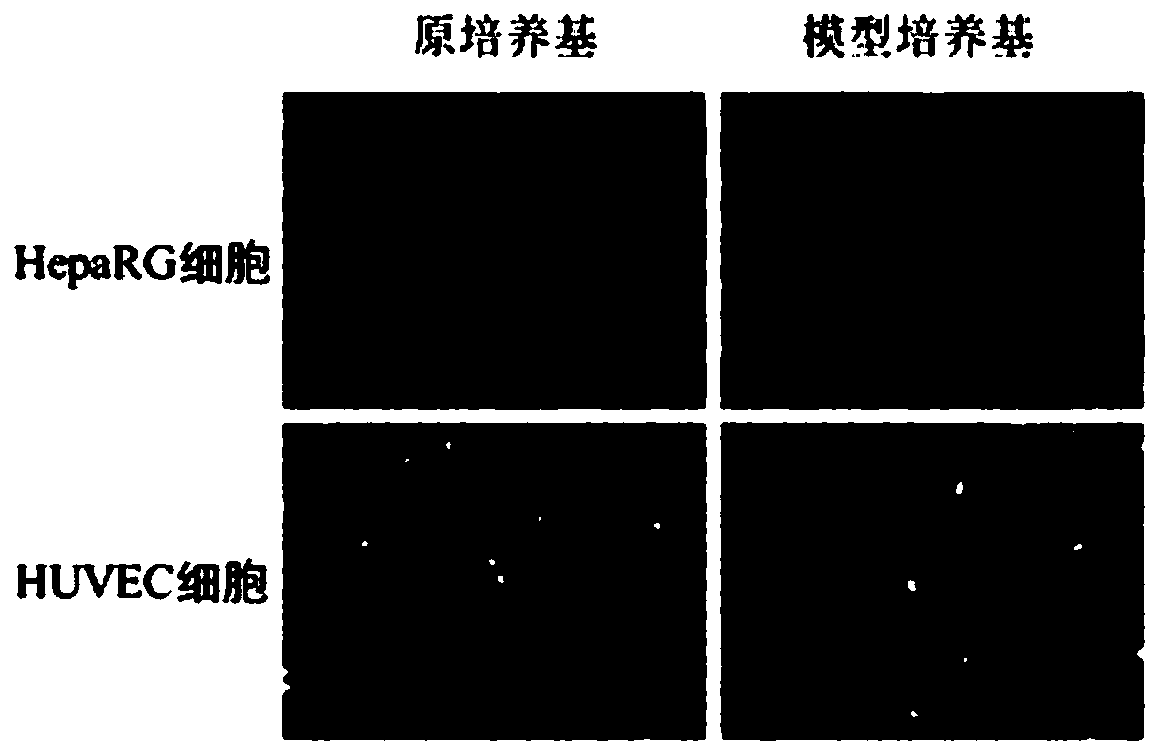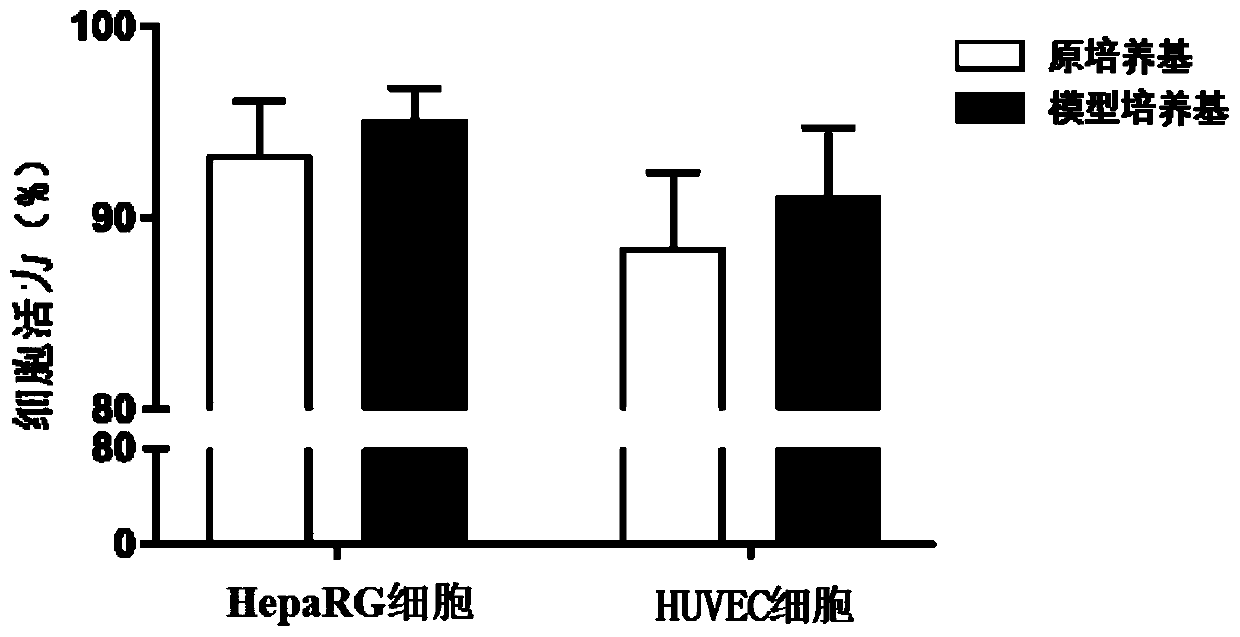Bionic liver organ culture model and application thereof
An organoid and model technology, which is applied in the field of in vitro cell culture technology and drug toxicity screening to achieve the effects of unique structure, enhanced toxicity sensitivity, and enhanced liver specific function and metabolic function.
- Summary
- Abstract
- Description
- Claims
- Application Information
AI Technical Summary
Problems solved by technology
Method used
Image
Examples
Embodiment 1
[0044] Example 1: Construction of a three-dimensional hepatocyte spheroid culture model alone (control group 1):
[0045] The hepatocytes were human hepatic progenitor cells HepaRG (purchased from Thermo Fisher), and the HepaRG cells were cultured according to the medium specified in the instructions (purchased from Thermo Fisher). HepaRG cells were digested with trypsin, and the cell viability was detected by trypan blue. The cell viability reached more than 90%, and it was ready for use.
[0046] Pipette the HepaRG cell suspension evenly and add it into the groove device, place it in a 37°C, 5% CO2 incubator for cultivation, and cultivate for 24 hours to form a three-dimensional hepatocyte spheroid culture model alone, and replace the culture every 2 days liquid.
Embodiment 2
[0047] Embodiment 2: Construction of endothelial cell culture model alone (control group 2):
[0048] The endothelial cells are human endothelial cells HUVEC (purchased from ATCC), and the HUVEC cells are cultured according to the medium specified in the instructions (purchased from ATCC). The HUVEC cells were digested with trypsin, and the cell viability was detected by trypan blue, and the cell viability reached more than 90%, and it was ready for use.
[0049] Pipette the HUVEC cell suspension evenly and add it to the tranwell, place it in a 37°C, 5% CO2 incubator for cultivation, and cultivate for 24 hours to form an endothelial cell culture model alone, and replace the culture medium every 2 days.
Embodiment 3
[0050] Example 3: Construction of a bionic liver organoid culture model (model group):
[0051] The hepatocytes were human hepatic progenitor cells HepaRG (purchased from Thermo Fisher), and the HepaRG cells were cultured according to the medium specified in the instructions (purchased from Thermo Fisher). The endothelial cells are human endothelial cells HUVEC (purchased from ATCC), and the HUVEC cells are cultured according to the medium specified in the instructions (purchased from ATCC). HepaRG and HUVEC cells were digested with trypsin, respectively, and the cell viability was detected by trypan blue. The viability of HepaRG and HUVEC cells reached more than 90%, and they were set aside.
[0052] Pipette the HepaRG cell suspension evenly and add it into the groove device, place it in a 37°C, 5% CO2 incubator for cultivation, and cultivate for 24 hours to form a three-dimensional hepatocyte spheroid culture model alone. The HUVEC cell suspension was pipetted evenly and ad...
PUM
 Login to View More
Login to View More Abstract
Description
Claims
Application Information
 Login to View More
Login to View More - R&D
- Intellectual Property
- Life Sciences
- Materials
- Tech Scout
- Unparalleled Data Quality
- Higher Quality Content
- 60% Fewer Hallucinations
Browse by: Latest US Patents, China's latest patents, Technical Efficacy Thesaurus, Application Domain, Technology Topic, Popular Technical Reports.
© 2025 PatSnap. All rights reserved.Legal|Privacy policy|Modern Slavery Act Transparency Statement|Sitemap|About US| Contact US: help@patsnap.com



